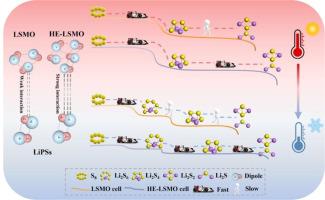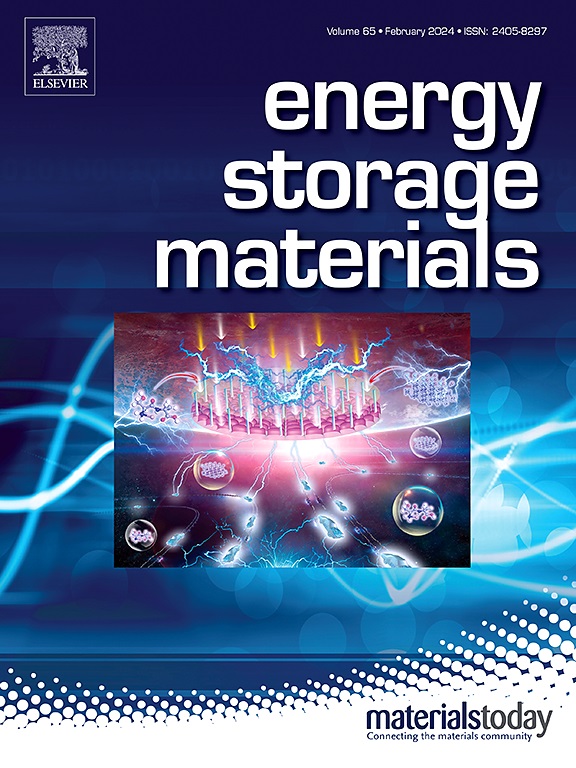High-entropy-induced strong dipole moment for accelerating sulfur reduction kinetics lithium-sulfur batteries across a wide range of temperatures
IF 18.9
1区 材料科学
Q1 CHEMISTRY, PHYSICAL
引用次数: 0
Abstract
Developing unexpected electrocatalysts is essential for lithium−sulfur batteries operating under harsh environmental conditions. Herein, a high−entropy−induced dipole moment enhancement strategy is proposed to address the problems related to complex temperature variations. In particular, a new platform corresponding to liquid-liquid conversion appears at low temperatures, considered as another rate-determining step. High−entropy oxide La0.71Sr0.29(Fe0.19Co0.20Ni0.20Zn0.19Mn0.22)O3−δ (HE−LSMO) nanosheets are synthesized by incorporating more metallic ions into LaSrMnO3, which would increase the crystal asymmetry, create the redistribution of the electron cloud in the HE−LSMO, thereby enhancing dipole moments and strengthening the dipole−dipole interaction between HE−LSMOs and polar intermediate lithium polysulfides (LiPSs). The HE−LSMO can effectively adsorb LiPSs and greatly promote rapid conversions of LiPSs during the sulfur reduction process at a range of −35 to 50 °C. At 50 °C, the S/HE−LSMO cathode exhibits a high initial specific capacity of 1455.9 mAh g−1 at 0.5 C, with a capacity retention rate of 71.1 % after 100 cycles. At −35 °C, the S/HE−LSMO cathode maintains an initial capacity of 740.7 mAh g−1 at 0.5 C, with an impressive capacity retention of 90.4 % after 100 cycles. This work demonstrates the feasibility of the high−entropy−induced dipole moment enhancement strategy for lithium−sulfur batteries under wide temperatures.


求助全文
约1分钟内获得全文
求助全文
来源期刊

Energy Storage Materials
Materials Science-General Materials Science
CiteScore
33.00
自引率
5.90%
发文量
652
审稿时长
27 days
期刊介绍:
Energy Storage Materials is a global interdisciplinary journal dedicated to sharing scientific and technological advancements in materials and devices for advanced energy storage and related energy conversion, such as in metal-O2 batteries. The journal features comprehensive research articles, including full papers and short communications, as well as authoritative feature articles and reviews by leading experts in the field.
Energy Storage Materials covers a wide range of topics, including the synthesis, fabrication, structure, properties, performance, and technological applications of energy storage materials. Additionally, the journal explores strategies, policies, and developments in the field of energy storage materials and devices for sustainable energy.
Published papers are selected based on their scientific and technological significance, their ability to provide valuable new knowledge, and their relevance to the international research community.
 求助内容:
求助内容: 应助结果提醒方式:
应助结果提醒方式:


